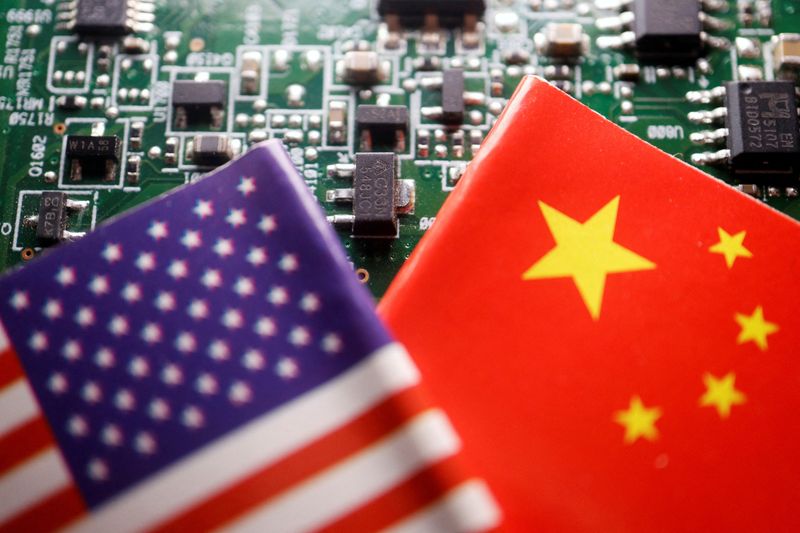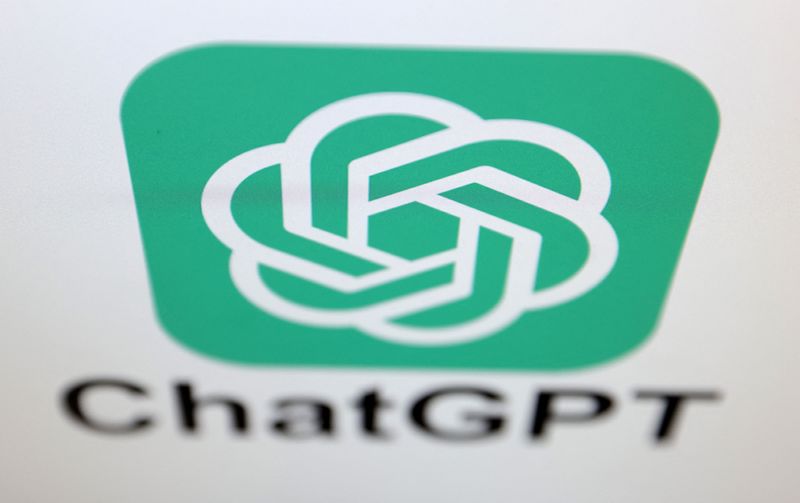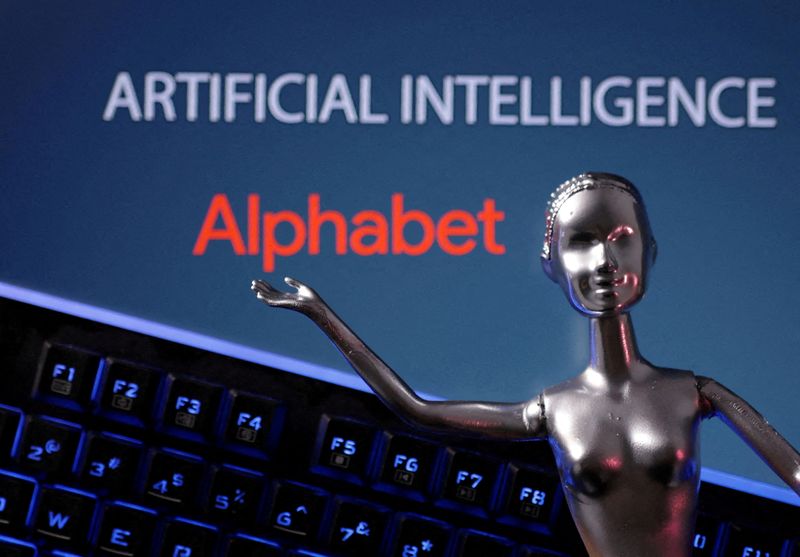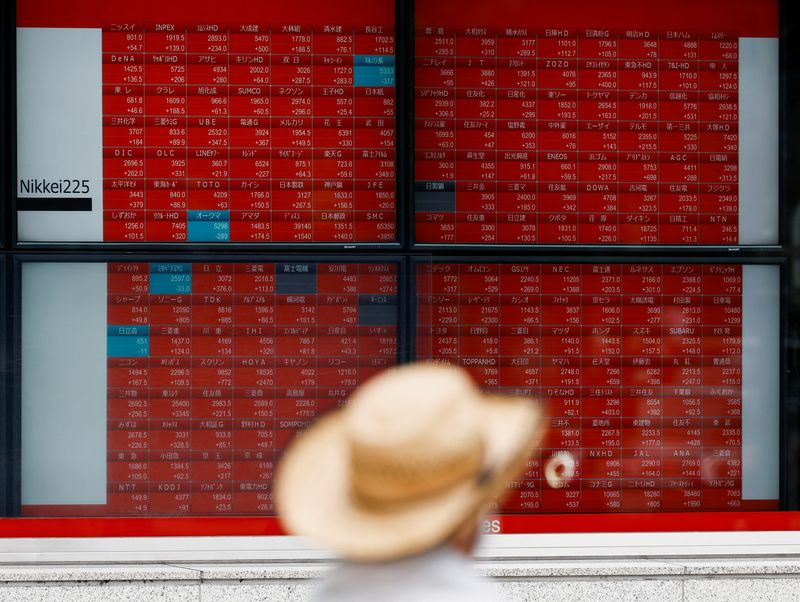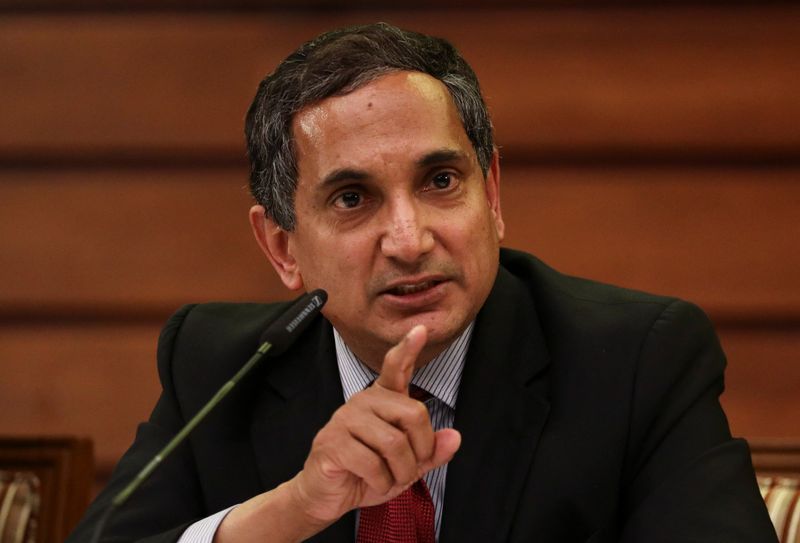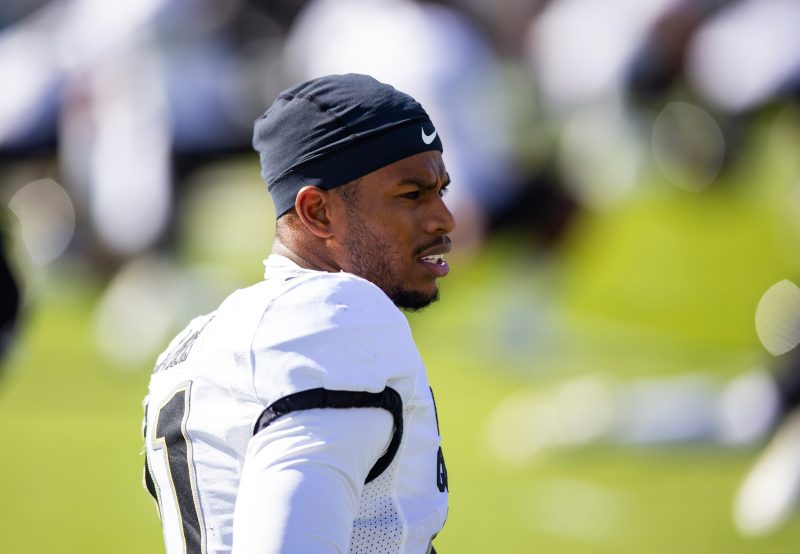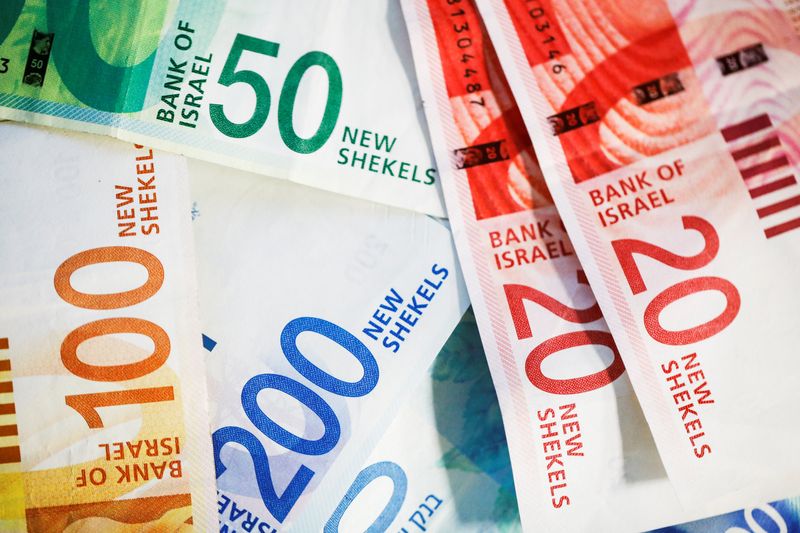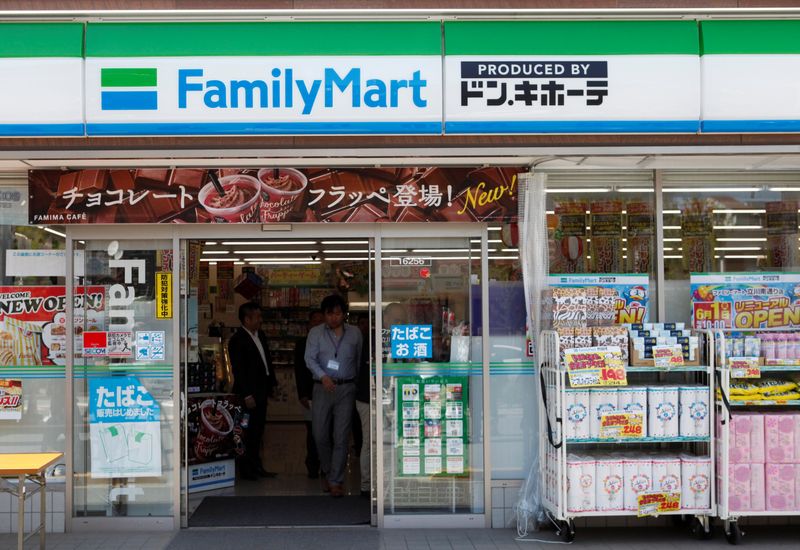Earnings call: Enviri Corp reports total revenues of $574 million

Enviri Corporation (Ticker: EVC), a global environmental solutions provider, disclosed a mixed financial performance in its third-quarter earnings call. While the company celebrated a record quarter for its Clean Earth division, it faced headwinds in the Harsco (NYSE:NVRI) Environmental (HE) and Rail segments due to a weakening global steel market and operational challenges, respectively.
Total revenues for the quarter stood at $574 million, a 4% decrease from the previous year, with adjusted EBITDA at $85 million. Despite these challenges, Enviri remains focused on its long-term strategy to enhance shareholder value and operational efficiency, targeting an EBITDA exceeding $400 million by 2027.
Key Takeaways
- Clean Earth division achieved over 20% adjusted EBITDA growth and a 17.5% EBITDA margin, a record performance for the quarter.
- Harsco Environmental segment faced difficulties due to global steel market conditions, with adjusted EBITDA slightly down at $53 million.
- Rail segment encountered operational issues resulting in a $2 million adjusted EBITDA loss for the quarter.
- Company adjusted 2024 EBITDA outlook to $317 million – $327 million, with a negative free cash flow projection of $10 million for the year.
- Enviri anticipates improved margin expansion, EBITDA, and top-line growth in the coming years, particularly in the Clean Earth division.
Company Outlook
- Enviri aims for an EBITDA exceeding $400 million by 2027, with free cash flow projected at over $150 million.
- The 2024 adjusted EBITDA outlook has been revised to reflect tempered expectations for HE and Rail but an improved outlook for Clean Earth.
- Enviri expects a significant increase in free cash flow in the coming years, driven by reduced pension contributions and improved Rail division performance.
Bearish Highlights
- Global steel market conditions and excess capacity in China have impacted the Harsco Environmental segment.
- Rail segment faced supply chain delays and the effects of Hurricane Helene, contributing to a net cash use of approximately $40 million for the year.
Bullish Highlights
- Clean Earth’s record margin and adjusted EBITDA growth underscore the division’s strong performance.
- Asset sales generated proceeds exceeding $50 million, and the UK pension fund was fully funded a year ahead of schedule.
- Upcoming contracts in Rail are expected to generate significant positive cash flow in the next few years.
Misses
- Overall Q3 revenues decreased by 4% year-over-year.
- Lower industrial and soil volumes contributed to a 1% decline in Clean Earth’s revenues.
- The Rail segment’s lower aftermarket services and FX losses related to the Turkish lira impacted financial results.
Q&A Highlights
- Complexity and cost estimation challenges in Rail division’s ETO contracts were discussed, with adjustments in forward loss provisions being a natural part of the project completion process.
- The discrepancy between noncontrolling interest dividends and earnings was attributed to timing and accumulated earnings from joint ventures, not a fundamental issue.
Enviri Corporation’s earnings call underscored the company’s resilience and adaptability in the face of sector-specific and macroeconomic challenges. As Enviri continues to navigate a complex global market landscape, its strategic focus on operational performance and shareholder value remains steadfast. With an eye on the future, Enviri is poised to capitalize on growth opportunities in its Clean Earth and Rail divisions, while managing the current headwinds in the Harsco Environmental segment.
InvestingPro Insights
Enviri Corporation’s recent financial performance, as highlighted in their earnings call, aligns with several key insights from InvestingPro. The company’s mixed results across its divisions are reflected in the current market sentiment and financial metrics.
According to InvestingPro data, Enviri’s market capitalization stands at $614.46 million, which is relatively modest considering its global operations. The company’s revenue for the last twelve months as of Q2 2024 was $2.11 billion, with a slight revenue growth of 0.16% in the most recent quarter. This aligns with the company’s reported total revenues of $574 million for Q3, which showed a 4% year-over-year decrease.
InvestingPro Tips indicate that Enviri “operates with a significant debt burden,” which could be a factor in the company’s adjusted 2024 EBITDA outlook and negative free cash flow projection for the year. This debt burden may also explain why the company is focusing on improving free cash flow in the coming years, as mentioned in their outlook.
Another relevant InvestingPro Tip suggests that “net income is expected to grow this year.” This optimistic outlook corresponds with Enviri’s target of achieving an EBITDA exceeding $400 million by 2027 and their anticipation of improved margin expansion and top-line growth, particularly in the Clean Earth division.
The stock’s recent performance has been challenging, with InvestingPro data showing a 23.02% decline in the past week and a 35.19% drop over the last three months. This volatility aligns with the company’s mixed financial results across its divisions and the global market challenges they’ve faced, especially in the Harsco Environmental segment.
It’s worth noting that InvestingPro offers 7 additional tips for Enviri Corporation, providing investors with a more comprehensive analysis of the company’s financial health and market position. These insights can be particularly valuable given the complex nature of Enviri’s operations across multiple sectors and geographies.
Full transcript – Enviri Corp (NVRI) Q3 2024:
Operator: Good morning. My name is Danielle, and I’ll be your conference facilitator. At this time, I would like to welcome everyone to the Enviri Corporation Third Quarter Release Conference Call. All lines have been placed on mute to avoid any background noise. After the speakers’ remarks, there will be a question-and-answer period. [Operator Instructions] Also, this teleconference presentation and accompanying webcast made on behalf of Enviri Corporation are subject to copyright by Enviri Corporation, and all rights are reserved. Please note, this call is being recorded. No recordings or redistribution of this telephone conference by any other party are permitted without the express written consent of Enviri Corporation. Your participation indicates your agreement. I would now like to introduce Dave Martin of Enviri Corporation. Mr. Martin, you may begin your call.
Dave Martin: Thank you, Danielle, and welcome to everyone joining us this morning. I’m Dave Martin, VP of Investor Relations for Enviri. With me today is Nick Grasberger, our Chairman and Chief Executive Officer; and Tom Vadaketh, our Senior Vice President and Chief Financial Officer. This morning, we will discuss our results for the third quarter and our outlook for the remainder of the year. We’ll then take your questions. Before our presentation, let me mention a few items. First, our quarterly earnings release and slide presentation for this call are available on our website. Second, we will make statements today that are considered forward-looking within the meaning of the federal securities laws. These statements are based on our current knowledge and expectations and are subject to certain risks and uncertainties that may cause actual results to differ materially from those forward-looking statements. For a discussion of such risks and uncertainties, see the Risk Factors section in our most recent 10-K and more recent 10-Qs. The company undertakes no obligation to revise or update any forward-looking statements. Lastly, on this call, we will refer to adjusted financial results that are considered non-GAAP for SEC reporting purposes. A reconciliation to GAAP results is included in our earnings release and the slide presentation. With that being said, I’ll turn the call to Nick. Thanks.
Nick Grasberger: Thank you, Dave, and good morning, everyone. Before we get into the results, I’d like to acknowledge our late colleague and friend, Mauro Curi, who is the President of our Harsco Environmental segment. We unexpectedly lost Mauro near the end of this past quarter. Mauro will be remembered for his energy and passion and his commitment to our business and to our values. We are fortunate to have a strong team across HE and at the executive level, and I will lead HE until the new President is named, which we expect to be early next year. Turning to the quarter, I’ll make a few comments on our Q3 results and on each of our three segments, and then provide an update on our strategic plan and our business portfolio as we focus on creating shareholder value. Our third quarter can be characterized by four developments. Number one, another record quarter for Clean Earth in terms of EBITDA and EBITDA margin. Second, with HE, a weakening of the global steel market due to the impact of excess capacity in China and slower demand in many of our key geographies. Third, continued supply chain and operational challenges in our Rail business. And fourth, the strengthening of our balance sheet through asset sales and the renewal and extensions of our revolver and other short-term credit facilities. Turning to Clean Earth. The business continues to exceed expectations and deliver double-digit earnings growth against challenging comparisons to last year. Adjusted EBITDA increased over 20% versus Q3 of last year while the EBITDA margin improved 17.5%, an increase of over 300 basis points. Cash flow remained strong. Pricing mix and numerous projects aimed at improving efficiency are driving the business. In addition to these factors moving forward, Clean Earth should also benefit from volume growth linked to sustainability initiatives among customers and new markets such as PFAS. It will also benefit from upgraded and common IT systems and other technology-driven initiatives as part of our One Clean Earth program. Harsco Environmental has faced headwinds due to a weakening steel industry in most markets. Excess capacity and weaker demand in China, which accounts for 50% of global steel production, has led to a flood of exports from the country, which has put pressure on some of our customers in less protected markets. Over the past six months, we have seen a handful of steel mills we support either cease or reduce production. Eventually, we expect China to reduce capacity while other countries increase protections against cheap Chinese steel. Falling steel price premium outside of China should also ease this pressure, potentially in the near term. Overall, we continue to see our mix of customers and contracts as positive, and we do not expect the short-term disruption to have a meaningful effect on our three-year outlook for HE that we shared a few months ago at our Analyst Day. Harsco Rail continues to face operational challenges, related primarily to the late deliveries from key vendors, global shipping disruptions and some bottlenecks in our own manufacturing processes. Tom will touch on the steps we’re taking to improve these operational issues. In addition, Hurricane Helene affected production and shipments at the end of the quarter from our primary manufacturing facility in Columbia, South Carolina. Overall demand for our equipment aftermarket parts and services remains healthy in all markets outside of China. I’m pleased with the progress we continue to make in improving our balance sheet. We’ve exceeded our goal of generating $50 million to $75 million of proceeds from asset sales, primarily noncore businesses. In addition, our sizable pension fund in the UK is now fully funded, and we don’t believe further contributions will be needed. We’ve reached this milestone about a year earlier than expected. And finally, the amendment and extension of our short-term credit facilities was well supported by our bank group and further strengthens our liquidity and debt maturity profile. As discussed during our Analyst Day last June, the Board and the management team are focused on taking actions that are in the best interest of Enviri and all of our shareholders. This includes frequently evaluating all options to enhance shareholder value and narrow Enviri’s valuation gap, and we are open-minded with respect to how we achieve these goals. Based on our evaluations to date, our view, our well-informed view is that the best course of action is to continue executing on our operational plan outlined a few months ago. We are confident that meaningful organic growth and margin improvement over the next two or three years will boost the value of both Harsco Environmental and Clean Earth while allowing time to stabilize the Rail business and better position that business for sale. We already have actions underway to support these initiatives and as a result, expect to yield EBITDA in excess of $400 million in 2027 with free cash flow of more than $150 million and net leverage of 2.5x. This will also provide greater strategic flexibility and optionality for value creation in the future. We expect to steadily improve free cash flow each year. Cash flow generation has been reduced the past few years by the investments made in our Rail business to execute three long-term contracts in Europe. This investment will decline next year, and then these contracts become a source of cash in the later half of 2026 and into 2027. In 2025, we expect free cash flow between $40 million and $60 million due to improved performance in Rail, continued strong cash flow in HE and CE and lower interest expense and pension contributions. I will now turn the call over to Tom.
Tom Vadaketh: Thanks, Nick, and good morning, everyone. Overall, Q3 was a challenging quarter due to market-related customer, supply chain and weather-related pressures, particularly for Horsco Environmental and Rail. The Enviri team responded to these challenges by pushing hard to close the quarter on a positive note, and I’m pleased that we delivered adjusted EBITDA within our guidance range for the quarter. Now let me comment on our third quarter performance further starting on Slide 4. In the third quarter, revenues totaled $574 million, down 4% on a reported basis. Revenues increased modestly on an organic basis, excluding the impacts of FX translation, recent divestitures and a $5 million ETO-related adjustment in Rail. Adjusted EBITDA was $85 million, an improvement of 3% year-over-year as reported and little changed from our multiyear high in the second quarter. FX translation and divestitures impacted our EBITDA growth by roughly 5%. Our year-over-year earnings growth was driven by Clean Earth, which had another fantastic quarter with record quarterly earnings and margins. Relative to guidance, Rail performance was below our expectations and was impacted by shipment and supply chain delays for standard equipment, lower aftermarket sales in Asia and lower revenue recognition and profits on certain contracts due to operational bottlenecks and higher costs. Hurricane Helene, right at the end of the quarter also impacted deliveries. HE results were also slightly below our internal expectations, where we saw lower service volumes driven by our customers curtailing or slowing production in recent months, as well as delays starting new sites and contract exit costs. These weaknesses in performance were offset by Clean Earth, where we benefited from pricing, efficiency initiatives and better overall cost performance. Our adjusted diluted loss per share was $0.01 for the quarter. Adjusted free cash flow for the quarter was a deficit of $34 million versus a deficit of $7 million in the prior year quarter, with the change due to the timing of working capital and capital spending. Free cash flow was anticipated to be negative in the quarter, although it was below our expectations mainly due to the cash impacts of the shipment and production delays in Rail. We saw significant cash usage this quarter in Rail, where our ETO contracts continue to consume cash. Otherwise, HE and CE generated approximately $50 million of free cash flow in the quarter and this offset our interest costs and other corporate items. Our covenant leverage ratio remained just below 4 times, and our net debt was stable in the quarter. The successful sale of Reed Minerals offset the impact of the negative cash flow on our total debt. Lastly, before moving on to segment results, I was very pleased that we extended our revolver and accounts receivable facilities at favorable terms. We will continue to have proactive approach to deal with upcoming debt maturities. And with these two extensions, the next major maturity is not until 2027. Also, since the quarter ended, we entered into an additional floating to fixed interest rate swap for a portion of our term-loan. The terms were attractive, and I view the swap as prudent risk management against future rate movements. Please turn to Slide 5 and our HE segment. Segment revenues totaled $279 million, down 2% compared with the prior year quarter, net of a $6 million FX translation impact and a $15 million impact from divestitures. Adjusting for the FX impact and the sale of performance and Reed Minerals, organic growth for HE was 5%. Adjusted EBITDA for the quarter totaled $53 million, which was modestly lower versus the prior year, and again is net of FX and divestitures. Compared with last year, FX, divestitures and contract exits offset the favorable impact of price, growth investments and higher service levels in HE. HE’s EBITDA margin was 19% in the quarter. Next, please turn to Slide 6 to discuss Clean Earth. For the quarter, revenues totaled $237 million, down 1% versus the prior year with lower industrial and soil volumes, mostly offset by higher prices. Hazardous Materials revenues totaled $195 million, while Soil-Dredge revenues were $42 million for the quarter. Meanwhile, adjusted EBITDA increased 23% to reach $42 million and CE’s quarterly margin increased to 17.5%. Both of these KPIs are again quarterly records for CE. The increase in EBITDA was driven by price, lower incentive compensation and lower bad debt expenses as well as lower transportation and disposal costs that are the result of our efficiency initiatives. Now please turn to Slide 7 and our Rail business. Rail revenues totaled $58 million and its adjusted EBITDA was a loss of $2 million in the second quarter. Compared with the 2023 quarter, the EBITDA change is the result of lower aftermarket and contracted services volumes as well as lower revenues from various other equipment contracts. We also incurred an FX loss of approximately $1 million linked to the Turkish lira. Contributions from standard equipment were modestly higher year-on-year. Both revenues and adjusted EBITDA in the quarter were impacted by Hurricane Helene right at the end of the quarter, which resulted in certain shipments being pushed to the fourth quarter. I’ll note that the adjusted EBITDA for the quarter excludes forward loss adjustments of $10.5 million related to our three large ETO contracts in Europe. The impact of these adjustments on revenues was approximately a reduction of $5 million in the quarter, which skews the year-on-year revenue comparison. As mentioned earlier, supply chain issues and operational bottlenecks continue to hamper Rail. Fixing these issues is a top priority for the company and we have taken action to strengthen the Rail team and have launched several initiatives to improve these areas of the business. Another key priority is, of course, to continue to drive the completion of the three large ETO contracts. As I mentioned earlier, the business saw a significant cash usage in the quarter stemming from delayed deliveries to customers in the base business and on certain contracts. We expect the business to be in a net cash use position for the full year in the $40 million range. We continue to see strong demand in our base business for Equipment and Services, and our pipeline is strong. Year-to-date bookings were over $140 million and in line with our expectations. As we said at our Investor Day in June, Rail is a valuable part of our portfolio which we expect will deliver steady earnings and cash flow in the future. Now let me turn to our updated 2024 outlook on Slide 8. Enviri’s full year adjusted EBITDA is now expected to be within a range of $317 million to $327 million, which is up 5% versus 2023. The midpoint of this range is down just over $10 million from our prior guidance with a lower range reflecting tempered expectations for HE and Rail, partially offset by a raised outlook for Clean Earth. For HE, the change reflects the impact of the Reed divestiture. It also reflects lower service levels in HE as a result of reduced production and some curtailments by our steel customers in Q4. This expectation reflects recent outlooks provided by the World Steel Association and others. September steel production among our customers was the lowest of the year and we expect these production levels to be maintained for the remainder of the year. For Rail, the change relates to some shipments being pushed into 2025 and our latest assessment of our performance on certain contracts. Our detailed segment outlook can be found in the appendix of the presentation. The other item I would mention is free cash flow, where our outlook has also changed. Lower cash generation for the year reflects the reduced expectations for earnings and is also partially timing related. It reflects slower cash receipts from China, which we have flagged to you in the past and the pushout of some milestone receipts in Rail. The midpoint of our free cash flow guidance is now negative $10 million. This total includes cash usage at Rail, which I just mentioned a moment ago. Otherwise, we expect HE and CE will together generate approximately $200 million of cash this year, which we have said previously and which we find compelling, and this almost fully offsets our interest and other cash outflows. To be clear, we are disappointed in our 2024 cash performance. As Nick said, we do expect a positive inflection in our cash generation in 2025. Our interest burden should decline as should our pension contributions and most importantly, we expect Rail cash performance to improve as we make progress on our large ETO contracts. Let me conclude on Slide 9 with our fourth quarter guidance. Q4 adjusted EBITDA is expected to range from $68 million to $78 million. And I would note that Q4 is traditionally a seasonally weak quarter for both HE and CE. Relative to 2023, HE environmental EBITDA, Harsco Environmental EBITDA is anticipated to be lower due to FX translation impacts, contract exits, divestitures and a less favorable services mix. Clean Earth EBITDA is expected to be above the prior year quarter with higher prices, cost improvements and lower incentive comp expected to drive earnings growth. And Rail EBITDA is expected to increase modestly year-on-year due to higher volumes and improved mix and certain contract adjustments in the prior year quarter. Lastly, on Q4, I would note that free cash flow is anticipated to strengthen from Q3, as is normally the case. Cash received delays from Q3 will also help cash performance in the current quarter. Thanks, and I’ll now hand the call back to the operator for Q&A.
Operator: [Operator Instructions] The first question comes from Rob Brown from Lake Street Capital Markets. Please go ahead.
Rob Brown: Hi. Good morning. Thanks for taking my question. I guess first question is on the ability to kind of deal with lower volumes in HE. How much is that is a fixed cost business? And how much flexibility do you have there to just lower cost with lower activity?
Nick Grasberger: Yes. Hi Rob, it’s Nick. As you know, we have minimum billings and fixed fees, which provide a good bit of protection against volume declines below a certain threshold. But until that threshold is reached, there is some impact. And that’s what we saw during the quarter and expect to see again in Q4. And then I think, Tom and I both mentioned that there have been a few sites that have just simply shut down. And so the impact of that is in our Q3 results and guidance as well.
Rob Brown: Okay. Great. Thank you. And then on the volume growth in Clean Earth, are you seeing that continue to grow nicely? And where are you seeing the strength there? Just some color on the volume growth would be helpful? Thank you.
Nick Grasberger: Yes. In general, the Health Care segment has been healthy for us, seeing volume growth there. In retail, there’s been a healthy amount of churn. And so that’s been flat to soft. And then the weakest of the three has been the so-called industrial or manufacturing sector where we’ve seen softness.
Rob Brown: Okay. Thank you. I will turn it over.
Operator: The next question comes from Larry Solow from CJS Securities. Please go ahead.
Larry Solow: Good morning. Thanks for taking the questions and my condolences as well to Mauro Curi’s family. I guess first question just on the environmental piece. It sounds like we’re obviously in a period of decline in global volumes. Just curious what’s like your contract win net loss? I know you mentioned some contract losses or you walked away from some contracts. Just trying to figure out your ability to sort of grow revenue in this environment? I know you mentioned a new contract or you had a press release, new cars deal [ph] just a couple of weeks ago. So just curious if you can give us any color on – from a global level – high level, your net win rate and does this new contract have any – is that meaningful?
Nick Grasberger: I’ll respond to that in a second, Larry. But let me first just emphasize what I think the audience knows here, which is that the best way to look at the performance of HE is on an EBITDA minus CapEx business. So we’ve softened our guidance on EBITDA, but the impact on EBITDA minus CapEx is much less. This business is much more stable than it has been and a higher level of cash flow than we’ve seen for a long time. And so we are able to mitigate some of these volume declines with efficiency on capital spending. And we’ve seen that in the third quarter and in Q4 and into next year as well. And in terms of revenue growth, we’ve commented before, and it certainly remains the case that we have an extraordinarily healthy and lengthy pipeline of growth opportunities in HE. Our competitive position is quite strong. And since we limit our investment in growth contracts, we’re really only selecting the best opportunities that tend to be in growth markets, the terms and conditions are the best and, of course, the returns are higher and the risk is lower. And we have a number of those contracts that are ramping up now. We’ll see the benefit of those in 2025, and that will serve to mitigate some of the short-term impact that we’re seeing at some of our existing sites. But in general, there’s a significant geographic shift underway in our portfolio now away from the UK and Europe and towards growth markets; India, Turkey, Mexico, I think, increasingly, the U.S., given the protections we have here against low-cost imports, but this takes time, right? You – we’ve seen some of that this year and we’ll see more of it next year but in general, this geographic shift is really going to be a tailwind for the business.
Larry Solow: Okay. I appreciate that color. And on the positive side, Clean Earth, obviously, relatively flat revenue and volumes had a very nice quarter on the margin side. I think you were up even sequentially like 150 bps. I know you’ve done a lot of initiatives over the last two years, Nick, pricing and efficiencies. I think you had opted sort of three-year target of 17% around where we are today on the margin. Is there more room for upside – pretty impressive to this quarter? Anything unusual to kind of drive further increases in margin on flat revenue?
Nick Grasberger: I would say, nothing unusual. As you know, the first four years of Clean Earth, we focused an awful lot on efficiency and cost and pricing and leadership and structure and so forth. And we’re now putting a significant effort behind driving volume growth with new leadership, new focus, kind of enhanced value propositions and so forth. So I think as we look forward, we’ll start to see more volume growth drive margin expansion and EBITDA and top line growth in that business.
Larry Solow: Okay. And then just last question on the cash flow and the free cash flow. I appreciate sort of the early look out to next year. If you look at the midpoint for this year or next year, it’s a nice significant job, I think like $60 million. I know Rail is losing $40 million this year. Is the biggest piece of kind of that flip going to be that Rail number goes from 40% to maybe closer to positive next year? I’m just trying to get a little better hand on that. Thanks.
Tom Vadaketh: Yes. Look, we – obviously, we’ll comment in more detail. We’re going to go through our annual planning cycle here momentarily, and then we’ll only give you guys guidance in the early part. But I think of it in maybe four distinct pieces, right? So the pension contributions, cash pension contributions, we expect that to be down significantly year-on-year as we go into 2025. Nick mentioned that our pension fund in the UK is now at a fully funded status. We still got to do a little bit of work to make it happen, but I expect those contributions to be down significantly. Interest costs, yes, needless to say, we expect interest payments to be down somewhat year-on-year. So those are two big chunks that already sort of give us some pathway there. And then, on Rail, we expect the Rail cash performance. As I said in my comments, this year, Rail is in a cash-use position in the $40 million range, right, so negative $40 million. I do expect that to improve significantly. I can’t say now, it’s a little too early, if you don’t mind, Larry, and I’ll give you more details but where it flips into positive, but certainly, I expect it to be much, much better. And then, of course, the HE and CE businesses, we expect to keep chugging along and those will deliver a little bit extra cash as well.
Larry Solow: Great. I appreciate that call Tom. Thank you everybody.
Nick Grasberger: I think one important point just to add on these long-term contracts in Rail. With the exception of the two large contracts in the UK and Germany, the others, all flipped to positive cash flow when they end next year. So that will significantly reduce the net cash outflow in Rail next year. We’ve been investing in the past couple of years about $50 million per year in cash in those contracts. So again, when you start to look forward, thinking our long-range plan, when that $50 million is over, and we’re generating $30 million to $40 million of cash flow in Rail per year, plus the cash flow in HE and CE which should continue to be strong and interest comes down and pension, now that’s why we’re pretty confident we’re going to get to this $150 million-plus range per year in free cash flow in a couple of years.
Larry Solow: Got it. Thanks Nick.
Operator: [Operator Instructions] The next question comes from Brian Butler from Stifel. Please go ahead.
Brian Butler: Good morning. Thanks for taking the questions.
Nick Grasberger: Hi, Brian
Tom Vadaketh: Hi, Brian
Brian Butler: On the Rail piece, can we just go back to those ETO contracts that are kind of you’ve been investing in and kind of you’re getting to positive. What’s still – can you remind everyone on the time line? And how much cash should those ultimately generate over the next three, four years as they kind of – as they finish up? Because you really should have a pretty positive inflow after multiple years of investment in it?
Nick Grasberger: Yes, no doubt. So next year, on the smaller ETO contracts, I think that number is $20 million to $25 million of positive next year. That will be offset by continued investment into the contracts in the UK and in Germany. But those two contracts, if you look to the latter part of 2026 into 2027, 2028, collectively, those should throw off $75 million or so of free cash flow. My comment a minute ago was when we’re on the other side of those, right? We’ll still swing from kind of minus $50 million what we’ve been seeing in Rail in the past couple of years to kind of a plus $20 million or $30 million even not accounting for the positive cash flow at the end of those two large contracts.
Brian Butler: Okay. And then on the hurricane activity that got kind of pushed, can you give some color on the sales and EBITDA that ultimately got moved? And is there more – is there a tailwind at some point on the cleanup side?
Nick Grasberger: Yes. I think there were three or four machines that ultimately did not make it out the door or could not be picked up by the shipping, the transportation company. And I’m going to say, the EBITDA impact of that was a few million, $1 million to $2 million.
Brian Butler: Okay. And then I guess last one, when you think of Clean Earth kind of looking into 2025, I mean, it still sounds like it’s pretty bullish and you had the industrial softness. Maybe your thoughts on, again, what that could look like? I mean, I’m not looking for guidance per se, but the momentum that you have, is that – can that be carried into 2025?
Nick Grasberger: Yes, we certainly think so. And adding to that would be an expectation for volume growth next year, which we largely did not have this year.
Brian Butler: Okay. Great. Thanks for taking the questions.
Operator: The next question comes from Devin Dodge from BMO Capital Markets. Please go ahead.
Devin Dodge: Yes, thanks. Good morning. So maybe I just want to come back to the Rail division. Another adjustment to the forward loss provision to those ETO contracts. Just can you provide some color on the drivers of this? So just if the provision is going up, I’m just trying to understand if things are getting worse or was there an assumption that things will get better and that – let’s say, coming out of Q2?
Tom Vadaketh: Devin, I’ll try and answer that. It’s Tom here. The – look, these are very complex projects right? And we’re making engines or vehicles that no one’s made before. They’re highly engineered, highly customized for each customer according to the design specs that they wanted us to produce. And they’re long term in nature as well. And so the ability of any company, to be honest, to be able to very, very accurately to the nearest million estimate the costs is challenging. And so as we get closer to the endpoint, we’re getting better visibility sometimes to what it’s really going to take to make these and so there is a constant fine-tuning. Now we do have puts and calls, right? So sometimes, we are able to reduce what we think it’s going to cost, sometimes it does cost more. There are also changes in the supply chain, there may be price increases, et cetera. So we are managing all of these things. There’s a ton of focus, as you can imagine, to try and do that. But occasionally, we do have to acknowledge from an accounting point of view that the cost is going to be more, and that’s what drove those adjustments. So it’s not – yes, it’s not overly optimistic expectations or whatever. It’s just – to me, it’s just a natural part of this process given that you have these very longstanding contracts and you’re discovering more as you go along.
Devin Dodge: Okay. Fair enough. Okay. And then maybe just another question likely for you, Tom. Just something that stands out on the cash flow statement. So noncontrolling interest in the financial cash flows, it seems like dividends are outpacing earnings contributions pretty meaningfully this year. Just can you remind us what assets they relate to? And why the gap between dividends and earnings has been more pronounced this year?
Tom Vadaketh: Yes, it’s probably just timing, right? So you’ve got accumulated earnings over the years. And at some point, we trip into a need to distribute some of those. The main joint ventures that I can think about, of course, we have some in China, as you know and then in Italy. I look around my colleagues to see if there’s anything else that you would – so I think those are the main – so it’s all HE related and what we needed to do in order to get into some of those businesses. But it’s timing, yes.
Devin Dodge: Okay, thanks for that. I’ll turn it over.
Operator: This concludes our question-and-answer session. I would like to turn the conference back over to Dave Martin for closing remarks.
Dave Martin: Thank you for joining us this morning. Feel free to contact me with any follow-up questions. And as always, we appreciate your interest in the company. I look forward to speaking with many of you in the coming weeks. Take care.
Operator: The conference has now concluded. Thank you for attending today’s presentation. You may now disconnect.
This article was generated with the support of AI and reviewed by an editor. For more information see our T&C.
